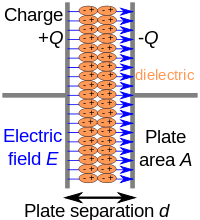
Rate theory on water exchange in aqueous uranyl ion
Sign Up to like & getrecommendations! Published in 2017 at "Chemical Physics Letters"
DOI: 10.1016/j.cplett.2017.01.020
Abstract: Abstract We report a classical rate theory approach to predict the exchange mechanism that occurs between water and aqueous uranyl ion. Using our water and ion-water polarizable force field and molecular dynamics techniques, we computed… read more here.
Keywords: water; rate theory; rate; uranyl ion ... See more keywords

A coupled rate theory-Monte Carlo model of helium bubble evolution in plasma-facing micro-engineered tungsten
Sign Up to like & getrecommendations! Published in 2018 at "Journal of Nuclear Materials"
DOI: 10.1016/j.jnucmat.2018.04.051
Abstract: Abstract A multiscale model of helium bubble evolution in plasma-facing materials is developed. The model links different stages of helium bubble evolution: deposition, nucleation, growth, motion, and coalescence. Helium deposition is simulated with the SRIM… read more here.
Keywords: micro engineered; model; bubble evolution; rate theory ... See more keywords

Radiation resistance of oxide dispersion strengthened alloys: Perspectives from in situ observations and rate theory calculations
Sign Up to like & getrecommendations! Published in 2018 at "Scripta Materialia"
DOI: 10.1016/j.scriptamat.2018.01.018
Abstract: Abstract Here, in situ ion irradiation and rate theory calculations were employed to directly compare the radiation resistance of an oxide dispersion strengthened alloy with that of a conventional ferritic/martensitic alloy. Compared to the rapid… read more here.
Keywords: radiation resistance; dispersion strengthened; theory calculations; resistance oxide ... See more keywords

Kramers Rate Theory of Pacemaker Dynamics in Noisy Excitable Media.
Sign Up to like & getrecommendations! Published in 2022 at "Physical review letters"
DOI: 10.1103/physrevlett.129.048101
Abstract: Rhythmic activities, which are usually driven by pacemakers, are common in biological systems. In noisy excitable media, pacemakers are self-organized firing clusters, but the underlying dynamics remains to be elucidated. Here we develop a Kramers… read more here.
Keywords: theory; excitable media; kramers rate; rate theory ... See more keywords